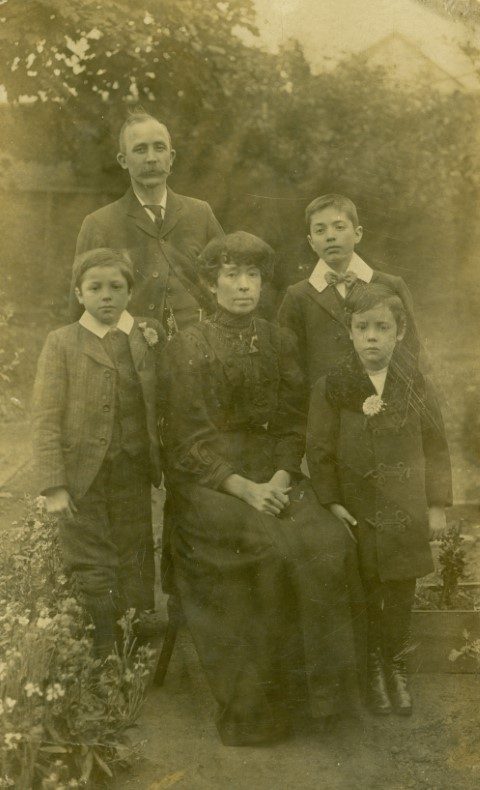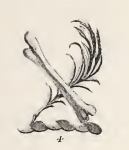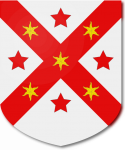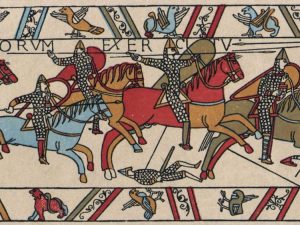Welcome to the Hodkinson History website
Welcome to all visitors!
My name is Samuel Hodkinson. I live in the town where my ancestors have lived for over 220 years – Stockport, U.K.
This website has the slowly growing historical account of my Hodkinson ancestors, with the cut-off point at around 1945. There is no information about living Hodkinsons – and there never will be.
Whoever you are, and whatever reasons brought you here, I hope you will find something that interests you on this website.
Origins of the Hodkinson surname
(Unless I have indicated otherwise, I have relied heavily on The Oxford Dictionary of Family Names in Britain and Ireland (FaNBI)1, published in 2016, for this section of this webpage.)
Research into the 1997 electoral rolls and other data identified 378,782 different surnames in Britain with two or more bearers, of which over 300,000 were the names of recent immigrants from a vast number of countries, including, but not solely from, countries of what was the British Empire.2
Within that long list of surnames is the Hodkinson surname. As a child, I used to think that Hodkinson meant “the son of the kin of Hod.” The “son of” part was correct, but the rest was more or less wrong. The surname Hod is rare and has nothing to do with the name Hodkinson. The origins of the Hodkinson surname are to be found in the Norman Conquest of 1066 and the introduction of a number of French names into England, one of which was Roger. A rhyming pet form of the name evolved as Hodge. In turn, Hodge had its own pet form – Hodgkin. A variant was Hodkin and, in many cases, Hodkin became a surname in its own right. In other cases, it gained the suffix ‘son’ to create the patronym of Hodkinson. This evolution can be summarised as Roger - Hodge – Hodgkin - Hodkin - Hodkinson.
For some Hodkinsons, the evolution of their surname had a slightly different route, which was: Roger – Hodge – Hodgkin – Hodgkinson – Hodkinson, of which more later.

My Hodkinson family in about 1911 before 42-year-old John William Hodkinson made his trip to Australia.
Following the Norman invasion, the use of surnames grew, but slowly. By the end of the 13th century, it was normal practice to have at least a non-hereditary surname, although this was not the case until the middle of the next century in the northern counties. By about 1250, hereditary surnames were generally in use by the wealthiest and most powerful families, with the practice spreading to almost everybody by the mid-15th century, with the north of England again being the last to follow suit.
The Oxford Dictionary of Family Names in Britain and Ireland (FaNBI) lists the earliest known Hodkinsons as follows: Henry Hodkinson, 1542, Kirkham, Lancashire; Anne Hodkinson, 1613, Brereton cum Smethwick, Cheshire; Ellen Hodkinson, 1626; and Richard Hodkinson, 1661, Lancashire. Also mentioned in the FaNBI dictionary, but under the surname of Hodgkinson, is Henricus Hodkinson, 1599, Derbyshire.
If you are a Hodkinson, were any of your ancestors Hodgkinsons?
Mention has already been made that one of the evolutionary routes for the surname of Hodkinson was a direct development of Hodgkinson, which means that some Hodkinsons originally had a “g” in their surname. At the same time, there are cases where Hodkinsons, who never were Hodgkinsons, actually became Hodgkinsons.3
I have so far researched my family history back to around 1790 and there are a number of Hodkinsons recorded with a “g” in their names from that date to the start of the twentieth century. This is doubtless partly due to church officials and registrars misunderstanding certain dialects when recording births, marriages and deaths. It is also partly due to illiterate Hodkinsons being unable to check the spelling of their name when written down by others. Interesting enough, there are virtually no cases of Hodkinsons in my family history having their names misspelt when family members registering an event were literate. It is safe to say that since 1790 my family have been Hodkinsons, regardless of the "g" in some of the Hodkinson surnames. The years before 1790 have yet to be researched.
A few Hodkinson facts
Most general information about the Hodkinson surname can be nicely grouped under three headings: its origin; its geographical distribution over time; and its socio-economic status. A final heading of "Other" rounds this section off.
Origins of the Hodkinson name – see above
Geographical distribution
The UK census of 1841 shows that Lancashire and Cheshire had most recorded Hodkinsons – 610 and 225 respectively. The next highest numbers were to be found in Staffordshire (65), Derbyshire (61), Yorkshire (57) and London (22). Of course, with variants of the Hodkinson surname, not all Hodkinsons were properly accounted for. My 1841 ancestors are recorded as Hodgkinson and, therefore, do not feature in the above figures. At the same time, the figures include those who were incorrectly recorded as Hodkinsons. The data, whatever the shortcomings, are important, for they show clearly where Hodkinsons were concentrated in 1841. In 1911, Hodkinsons were still concentrated in Lancashire and Cheshire, but they were now also appearing in other parts of the UK where they previously did not have a presence.
As the nineteenth and twentieth century progressed, increasing numbers of Hodkinsons could be found in a small number of countries elsewhere in the world. This includes members of my family who emigrated to the United States of America in the nineteenth century.
To try and get the latest statistics regarding the distribution of the Hodkinson surname, I trawled through quite a number of surname websites but much of the information available is contradictory which means at least some of it is unreliable. One site (forebears.io) gives the number of Hodkinsons in the UK in 2014 as 3,530. Another site (britishsurnames.co.uk) says that 3,262 is the “current” total – but there is no reference date for “current”. The most accurate data is to be found in The Oxford Dictionary of Family Names in Britain and Ireland (FaNBI), which, based on the 2011 census, gives the number of Hodkinsons in Great Britain (i.e. not including Northern Ireland) as 2,543. A separate figure in the FaNBI dictionary, based on a number of sources, gives the number of Hodkinsons in the whole of Ireland as 74. The 2011 population in Great Britain was 61.4 million – this means that there were about 41 Hodkinsons in every million people. Hodkinson certainly is not a common name, but, as mentioned in the FaNBI dictionary, it is common to have an uncommon surname.
As far as Hodkinsons living in other countries are concerned, the forebears site states that in 2014 there were 702 Hodkinsons in the USA, 451 in Australia, 149 in Canada and 87 in South Africa, with a number of other countries having 67 or less. The forebears site does say the statistics are in a developmental stage, but despite that, it is tempting to be unscientific, and add together the forebears worldwide 2014 figures for Hodkinsons (leaving aside any questions about accuracy), to the FaNBI 2011 figures for Britain and Ireland, all of which gives a total of 4,309 Hodkinsons in the world at a time when the world population was over 7,000,000,000.
Socio-economic status
Using what is often regarded as an outdated and ‘clumsy’ system of classification, Hodkinsons tend to be ‘working class’. In the 1881 census, the most common occupations of Hodkinsons were coal miner, farmer (who could range from those who enjoyed a prosperous lifestyle to those who eked out a meagre living), cotton weaver, bricklayer, agricultural labourer, and housekeeper. When researching one of my ancestors born near Stockport in 1905, I looked up the occupations of Hodkinsons in the Stockport Directory of the same year4 and, although the information can hardly be regarded as a representative sample of all Hodkinsons living in Stockport at the time, it strongly indicates working-class backgrounds. Twenty-four people are listed with the surname of Hodkinson, of whom 15 have occupations stated which are: bootmaker, charwoman, club collector, engine fitter, hatter, labourer (3), messenger, mill hand, moulder, railwayman, slasher, stoker, and watch maker. Moving on to 1939 and ancestry.co.uk provides lists of the most common Hodkinson occupations, which were, for males, general labourer, cotton weaver, railway clerk, and bricklayer; and, for females, cotton weaver, domestic servant, and unpaid domestic duties.
Nowadays, the growth of sophisticated methods of analysing increasing amounts of data relating to the lifestyles of individuals has led to different ways of classifying the population of the United Kingdom. Geodemographic systems, such as Acorn and Experian’s Mosaic, play a key role. One of Mosaic’s older categories (and no longer in use) had a lifestyle type with the label of ‘Coronation Street’, which it summarised as ‘poor, mostly white families, who own or privately rent, cheap terraced houses close to the centres of less prosperous provincial cities’.5 This is the group, according to Mosaic, which was more likely to include Hodkinsons.
What all the above does not mention, and there does not seem to be any relevant data, is the actual numbers, past and present, of Hodkinsons who had, or have middle-class backgrounds. At the same time, it has to be kept in mind that, from generation to generation, many Hodkinsons have been, and are, upwardly mobile – the status of the descendants of a 20th century working-class Hodkinson may well be very different in the 21st century. Then again, I have come across a Hodkinson family in my research who was moving quite nicely up the social scale whose fortunes underwent a dramatic reversal.
Other
The websites mentioned in the text above have other strangely-assorted facts about the Hodkinson surname, such as the average height of Hodkinsons in some countries; average life span of Hodkinsons in the USA; average salaries in some countries; most common Hodkinson first names, and so on.
If you are one of the few thousands Hodkinsons in the world, what are the chances of meeting another Hodkinson who is not a family member? Maybe you are like me and never have, and probably never will.
Mullets and estoiles — all part of a Hodkinson coat of arms
It is worth starting this section of this webpage with a quote from the College of Arms, which is the official heraldic authority (including granting coats of arms) for England, Wales, Northern Ireland and many countries throughout the world:
There is no such thing as a 'coat of arms for a surname'. Many people of the same surname will often be entitled to completely different coats of arms, and many of that surname will be entitled to no coat of arms. Coats of arms belong to individuals. For any person to have a right to a coat of arms they must either have had it granted to them or be descended in the legitimate male line from a person to whom arms were granted or confirmed in the past.6
Companies which sell coats of arms for surnames reproduce the coats of arms belonging to individuals who have had the same surname; transcribing the description of those coats of arms into images is often done with varying degrees of accuracy. Sometimes a coat of arms for a particular surname may never have existed, so it is simply created by a heraldic artist – or someone who is not a heraldic artist!
In terms of any Hodkinson having a coat of arms, a search through accessible heraldic records has provided three instances of the Hodkinson surname. One of them, Anne Hodkinson of Derby, who was born in the 1690s, was actually Anne Hodgkinson. In the sixth edition of A Display of Heradrie published in 1724, there is an entry for Richard Hodkinson7 of London but other information indicates he also was most likely a Hodgkinson.
That leaves one Hodkinson whose personal details – including any first names – are not known, but there are descriptions of his/her crest and shield.
The crest, of which there is a drawing in Fairburn’s 1905 book of crests, is that of a shank bone and a palm branch, arranged as a cross (‘in saltire’).8 It is quite likely the shank bone was related to a Hodkinson hunting activity – it certainly was the case with other individuals who had a shank bone as part of their crests. As for the palm branch, it has associations with peace and justice so that may have reflected the values that this particular Hodkinson held. The crest from Fairburn's book is reproduced here and, as part of an armorial bearing (coat-of-arms), it would have been coloured in natural colours.9

The unknown Hodkinson had a shield as illustrated, based on a written description in the 1830 book The British Herald.10
Above the shield would have been a helmet (on which sat the shank bone and palm branch crest), the style of which varied according to rank and social status, but nothing is known about this particular Hodkinson’s background and so her/his helmet style is not certain. On each side of the shield were so-called supporters – figures or objects depicted as holding the shield up – but, again, nothing is known about these. Finally, there is at least one site which sells coats of arms merchandise related to the Hodkinson surname which gives a Hodkinson motto as Sans Dieu rien (Without God nothing). These are the words which have been used by a number of individuals on their coats of arms, but I have not been able to find a motto for the one Hodkinson who did have a coat of arms.

The Hodkinson shield design is pleasingly symmetrical and the star shapes – those in red are known as mullets and those in gold (yellow) are estoiles – help to give it a striking appearance.
To get the image of the shield I took its heraldic description (known as a ‘blazon’) and using a website called DrawShield,11 I inserted the details and so created the image above. DrawShield, and other sites like it, also provide the means where anybody can create their own coat of arms and, although they have no official meaning, they can be fun to do.
An update. Quite some time has passed since writing the above, during which I had a significant birthday. As a gift, one of my relations created a coat of arms for me. The basis for the design was the crest and shield illustrated above, which belonged to the unknown Hodkinson. A closed helmet was added, which denotes the social status of an esquire or gentleman (the lowest social status possible for a coat of arms). The mantling and the supporters were chosen to reflect aspects of my heritage. A suitable motto was also chosen. Once the paper design was completed, a 3D copy was made, using a 3D printer, followed by a professional heraldic artist painting the coat of arms, following conventions as to the number and colour of tinctures used.
Despite having no recognised status with the College of Arms, it has a special status for me: it draws on the history of an unknown Hodkinson, keeping the memory of that person alive, but it also tells my history. It looks stunning and has pride of place on a wall in my office. I would love to publish an image of it on this page, but, whilst recognising that the design of the shied and crest are not original, it may be that others would plagiarise my new and unique (as an entirety, that is) coat of arms, either adopting or adapting it for their own purposes. Unpublished it is, and unpublished it stays!
Monsieur Norman Hodkinson
If you are a Hodkinson, it is worth reflecting that, as a general comment, you don't have an official coat of arms, your surname is relatively rare, has a somewhat low status and has a working-class pedigree.
Finally, your surname may not have come into existence had it not been for a successful invasion of England from Normandy over 950 years ago.

Notes and sources for this page:
- Patrick Hanks, Richard Coates, and Peter McClure, The Oxford Dictionary of Family Names in Britain and Ireland. (Oxford: Oxford University Press. 2016.) I made a lot of use of the introduction, especially sections 3.1 and 3.4, and pages 1303-1305 which deal with the origin of the Hodkinson surname and variants.
- Paul Hanks, Richard Coates and Peter McClure, Methods for studying the Origins and History of Family Names in Britain: Philology meets Statistics in a Multicultural Context. (Uppsala. 2011.)
- Avis Keen, Hodgkinson: our surname, our story, our legacy. (Lancaster: Carnegie Book Production. 2022.) passim.
- Stockport Directory 1905. (http://uk.sitestat.com/stockport/stockport/s?pdf.Stockport-1905-Fo-Hu-People-&ns_type=pdf&ns_url=http://www.stockport.gov.uk/content/communitypeopleliving/historyandheritage/lochis/dir1/19011910/sto1905fohup?a=5441) (Accessed 25 March 2009.)
- Experian, Mosaic UK Group and Type Descriptions. (http://www.business-strategies.co.uk/upload/downloads/mosaic/mosaic%20uk%20groups%20and%20types.pdf. 11 August 2008.)
- College of Arms, FAQs: heraldry. (https://www.college-of-arms.gov.uk/resources/faqs. 21 January 2020.)
- John Guillim, A Display of Heraldrie. (London: Thomas Ward. 1724.) Sixth edition. p.138.
- James Fairburn, Fairburn’s book of crests of the families of Great Britain and Ireland. (London and Edinburgh: T.E. and E.C. Jack. 1905.) Fourth edition. Volume 1. p.279.
- James Fairburn, Fairburn’s book of crests of the families of Great Britain and Ireland. (London and Edinburgh: T.E. and E.C. Jack. 1905.) Fourth edition. Volume 2. Plate 147.
- Thomas Robson, The British Herald. (Sunderland: Turner and Marwood. 1830.) Volume 2. Hodkinson.
- Karl Wilcox, DrawShield. (https://drawshield.net/index.html. 19 January 2020.)
This page was originally published in March 2009 with the latest revision made on 18th October 2024.
